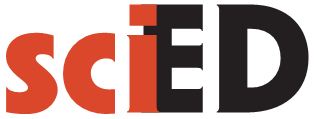Abstract
The paper reconsiders some well-known problems of learning physics, in the light of recent work on the way human beings respond to problems, particularly the distinction between “fast” and “slow” thinking. It concludes that much depends on the choice of situation with which to educate “fast” thinking. This leads to a critique of recent thinking about “Inquiry Based Science Education”. The paper concludes with a discussion of problems and opportunities that currently face curriculum development in physics.References
ATKIN, J., BLACK, P. Inside Science Education Reform. Buckingham : Open University Press, 2003.
BLACK, P., HARRISON, C., LEE, C., MARSHALL, B., WILIAM, D. Assessment for Learning: Putting it into Practice. Maidenhead : Open University Press, 2003.
DUIT, R. Bibliography—STCSE (Students’ and Teachers’ Conceptions and Science Education), 2010. http://www.ipn.uni-kiel.de/aktuell/stcse/download stcse.html
EULER, M. The role of experiments in the teaching and learning of physics. Research in Physics Education, Varenna Course CLVI, Amsterdam : IOS Press, 2004, p. 175–221.
FEYNMAN, R. QED: the strange theory of light and matter. Harmondsworth : Penguin Books Ltd., 1985.
JARVIS, T., PELL, A., HINGLEY, P. POLLEN primary teachers’ changing confidence and attitudes over two years POLLEN in-service programme, The Curriculum Journal, 2009, Vol. 13, No. 1, p. 43–69.
LINDAHL, B. Changes in pupils’ attitudes towards science during two years within the POLLEN project, 2009. http://www.pollen-europa.net
KAHNEMAN, D. Thinking, Fast and Slow. London : Allen Lane, 2011.
MILLAR, R. Rethinking science education: meeting the challenge of “science for all”. School Science Review, 2012, Vol. 93, No. 345, p. 21–30.
MUSE, 2010. http://education.epsdivisions.org/muse
OGBORN, J. (Ed.) Nuffield Advanced Physics, Harmondsworth : Penguin Books Ltd., 1971.
OGBORN, J. (Ed.) Advancing Physics AS, A2. Bristol : Institute of Physics Publishing (now published by Oxford University Press), 2000.
OGBORN, J., TAYLOR, E. Quantum physics explains Newton’s laws of motion, Physics Education, 2005, Vol. 40, No. 1, p. 1–9.
POLLEN. Designing and Implementing Inquiry-Based Units, 2009. http://www.pollen-europa.net/?page=ietK5bjge5o%3D
ROCARD, Y. Science Education Now. Brussels : European Commission Report EU22-845, 2007.
ROZIER, S., VIENNOT, L. Students’ reasoning in thermodynamics, International Journal of Science Education, 1991, Vol. 13, No. 2, p. 159–170.
VIENNOT, L. Reasoning in Physics: the part of common sense. Brussels : Kluwer, 2001.
VIENNOT, L. Teaching rituals and students’ intellectual satisfaction. Physics Education, 2006, Vol. 41, p. 400–408.
VIENNOT, L. Physics by inquiry: beyond rituals and echo-explanations. In L. Menabue, G. Santoro (Eds.) New Trends in Science and Technology Education, Selected papers, Bologna : CLUEB, 2010a, Vol. 1, p. 240–256.
VIENNOT, L. Physics education research and inquiry-based teaching: a question of didactical consistency. In K. Kortland (Ed.) Designing Theory-Based Teaching-Learning Sequences for Science Education, Utrecht : CDBeta Press, 2010b.
Authors who publish with this journal agree to the following terms:
- Authors retain copyright and grant the journal right of first publication with the work simultaneously licensed under a Creative Commons Attribution License that allows others to share the work with an acknowledgement of the work's authorship and initial publication in this journal.
- Authors are able to enter into separate, additional contractual arrangements for the non-exclusive distribution of the journal's published version of the work (e.g., post it to an institutional repository or publish it in a book), with an acknowledgement of its initial publication in this journal.
- Authors are permitted and encouraged to post their work online (e.g., in institutional repositories or on their website) prior to and during the submission process, as it can lead to productive exchanges, as well as earlier and greater citation of the published work (See The Effect of Open Access).
